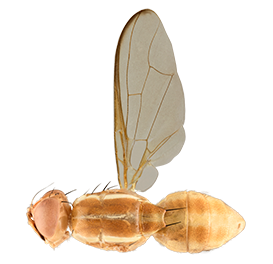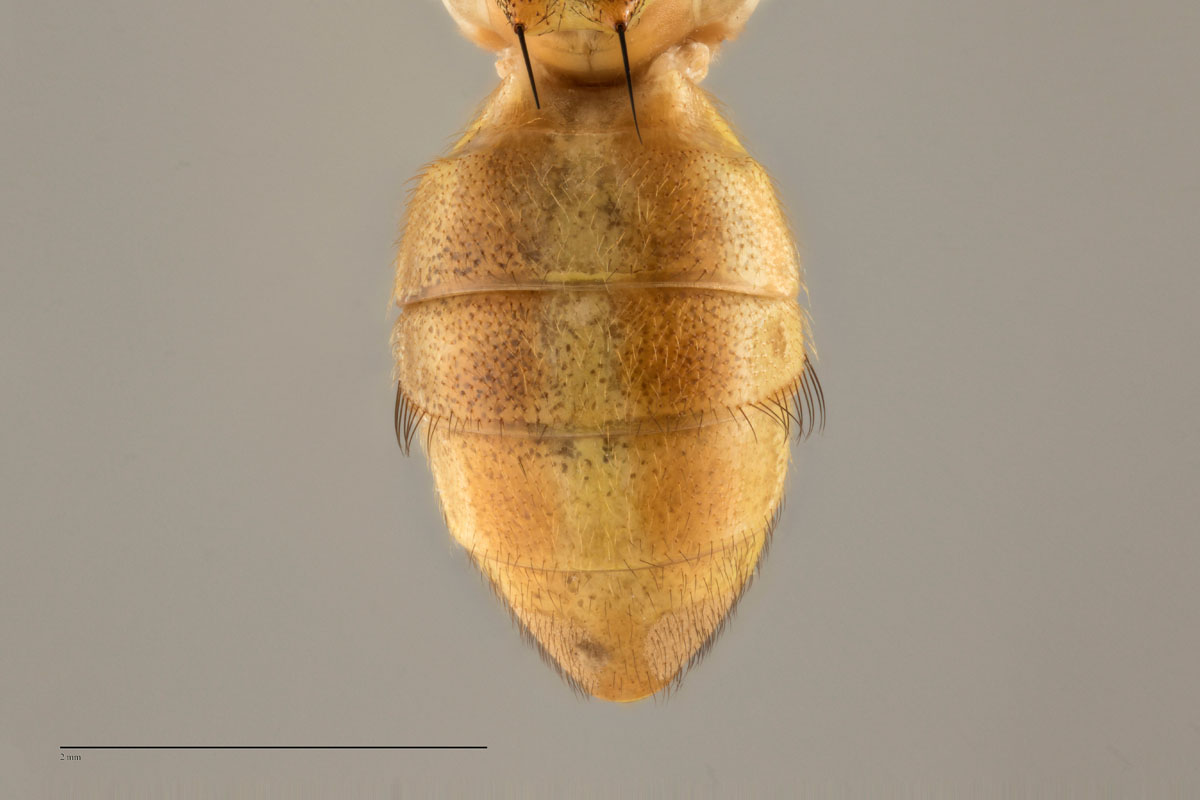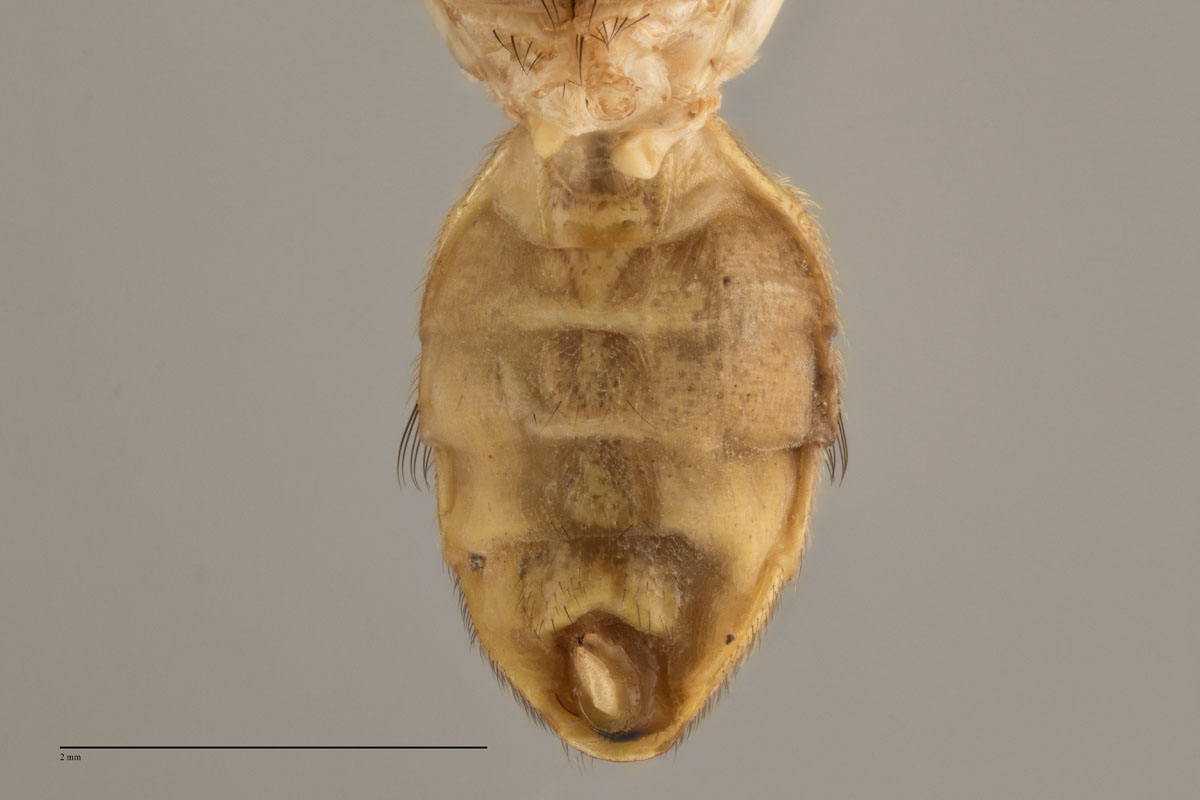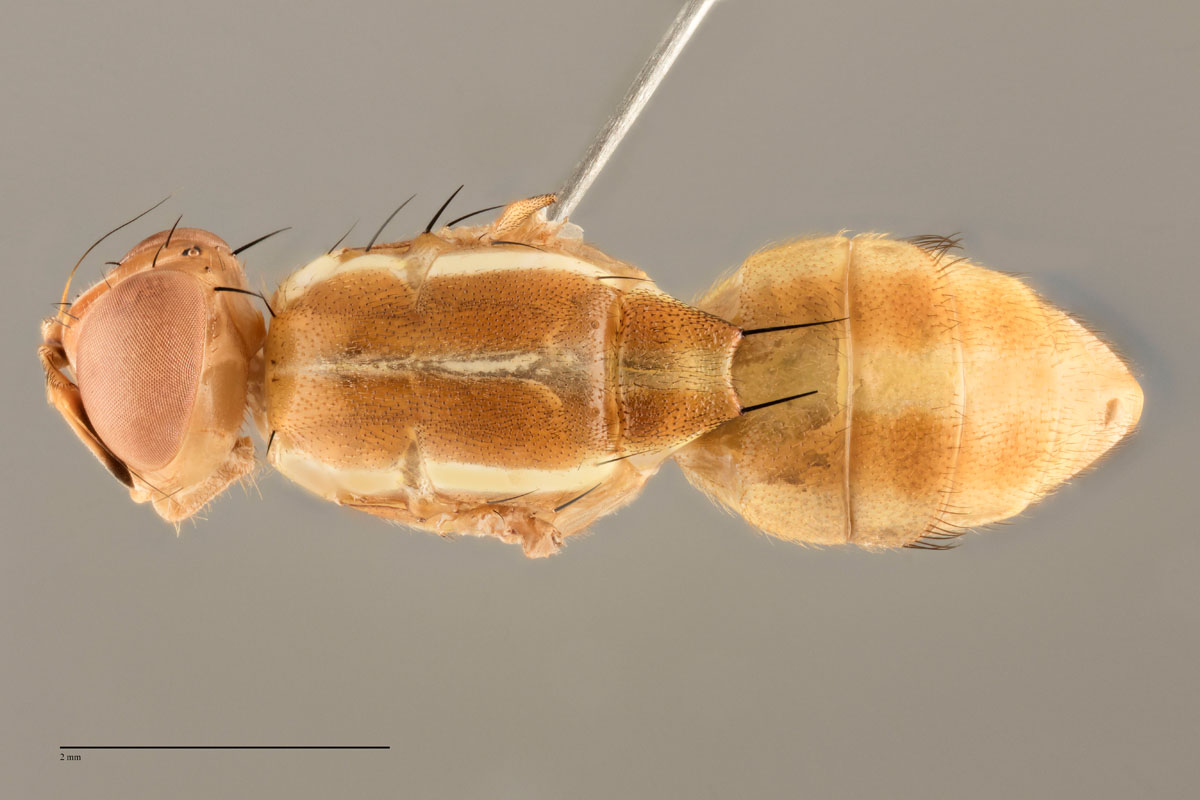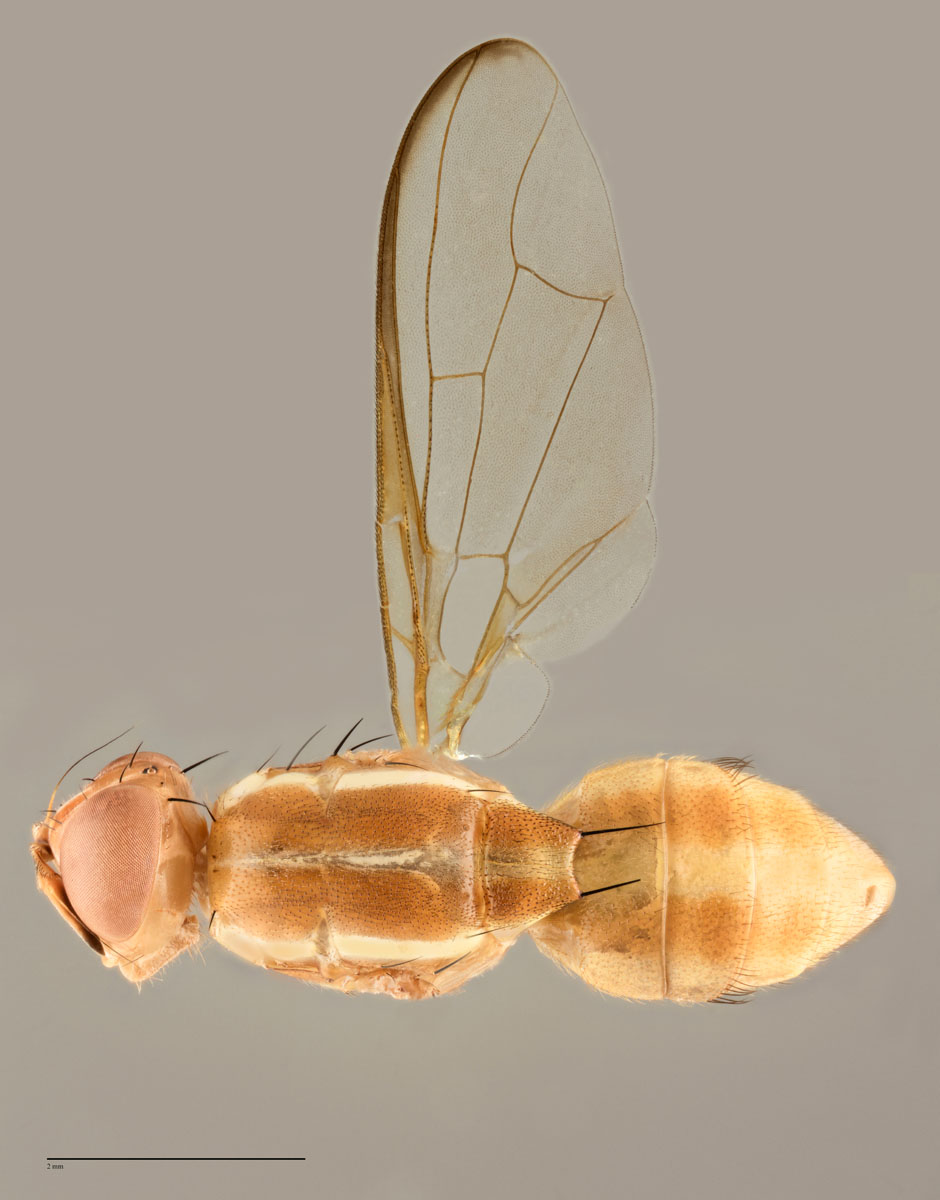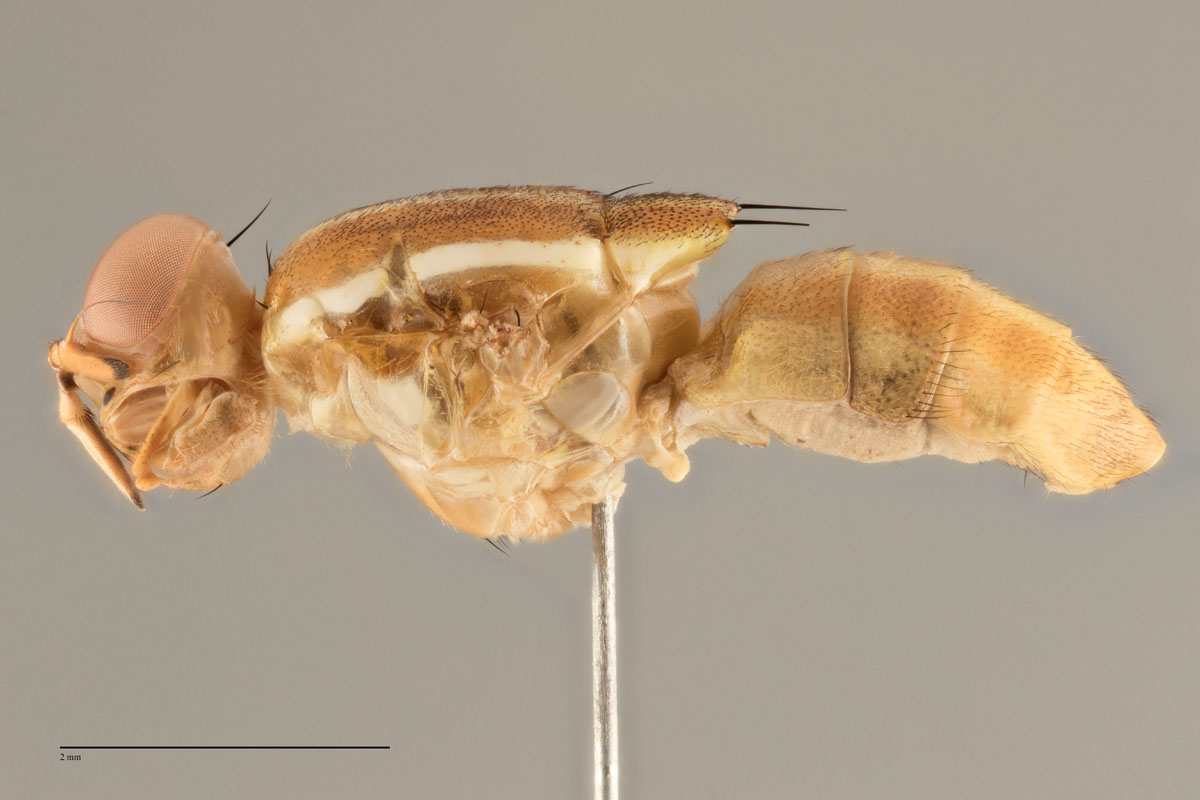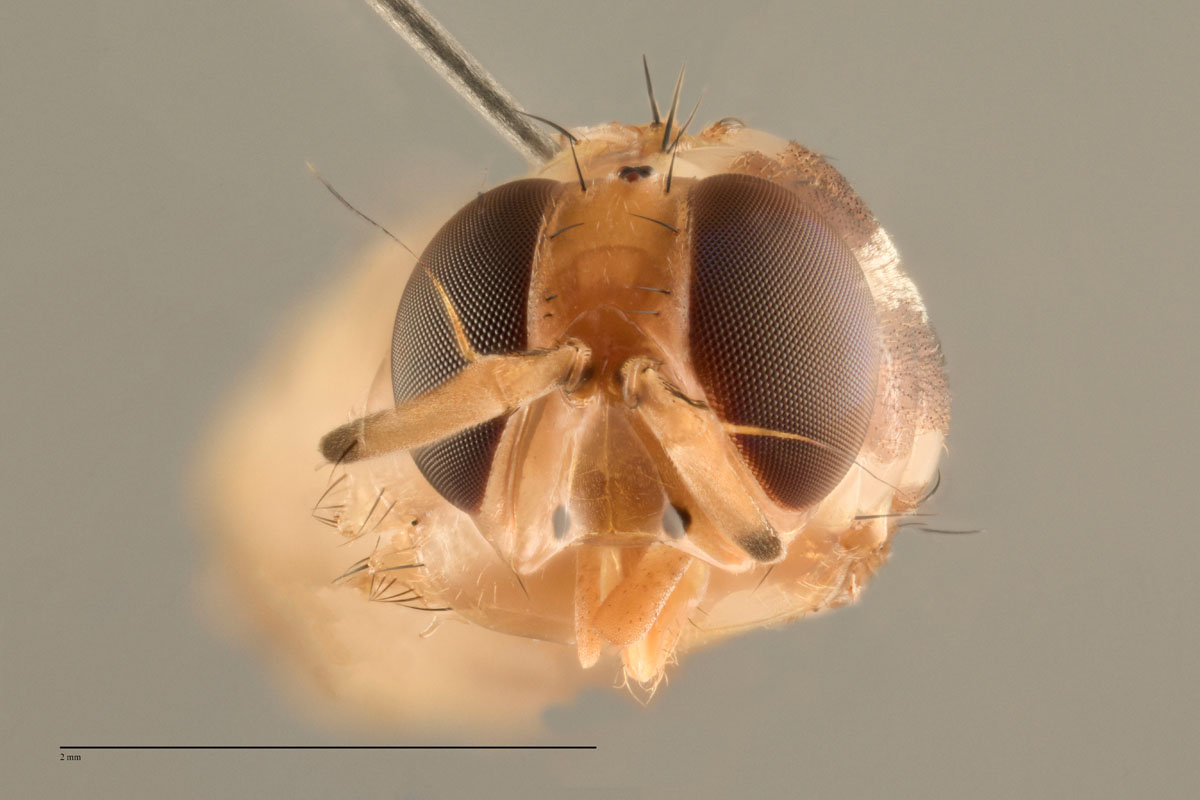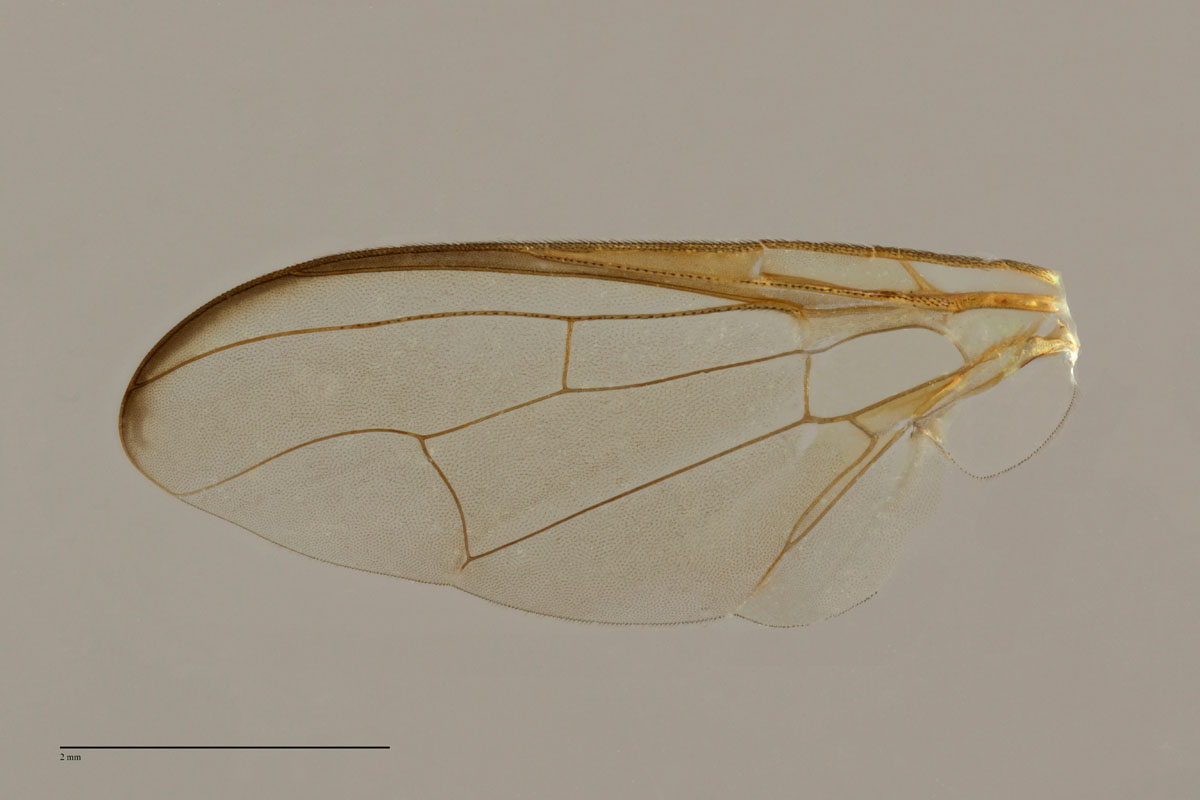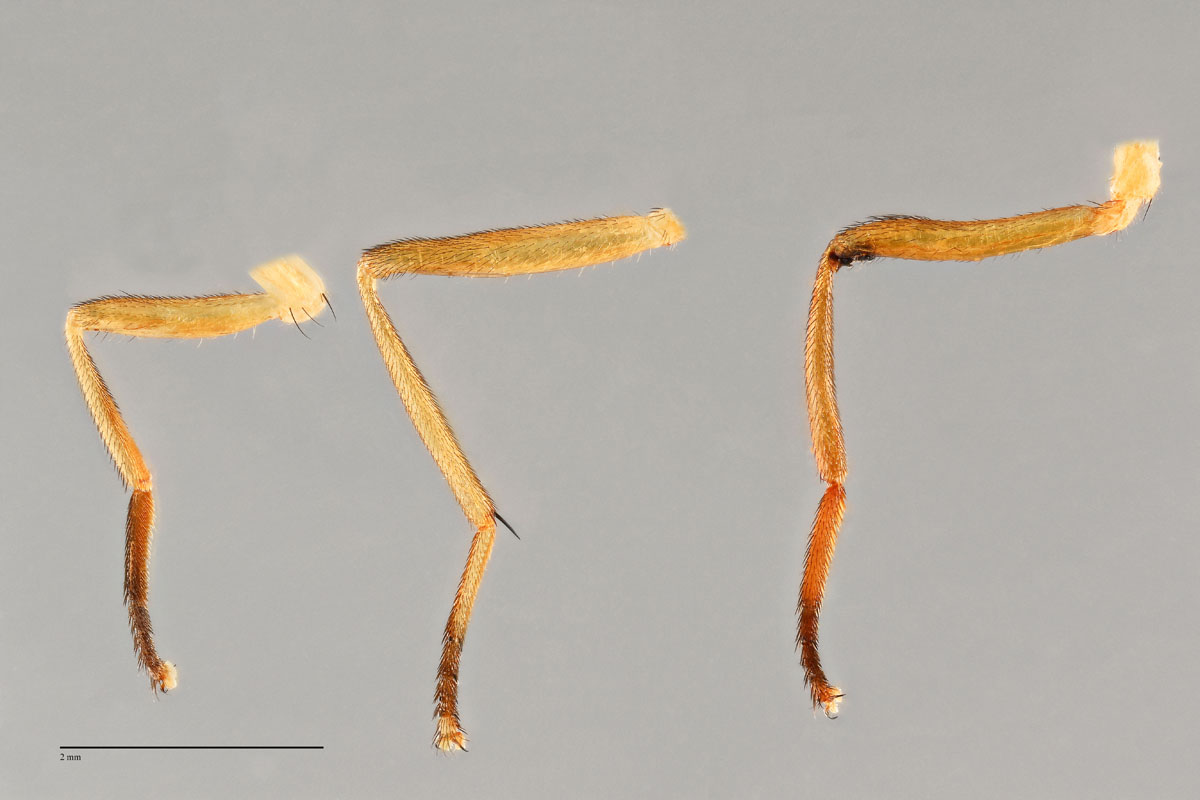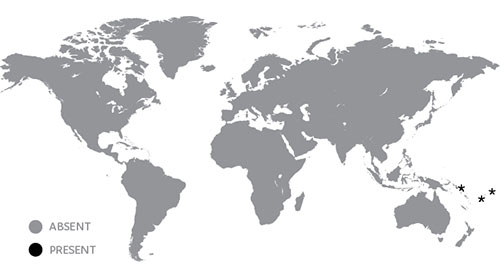Diagnosis
Morphological – adult
Features include:
- Medium sized species
- small black facial spots present
- postpronotal lobes fulvous except for a broad yellow band on posterior 2/3
- notopleura orange-brown
- scutum transparent with a shining orange-brown colouration and with irregular dark markings, broad lateral yellow band running from postpronotal lobe to end just before anterior end of lateral postsutural vitta, large yellow spot on pleural region in place of the normal mesopleural stripe, lateral postsutural vittae present and beginning anterior to mesonotal suture, medial postsutural vitta present, scutellum orange-brown with lateral yellow margins, wing with a narrow fuscous costal band and a broad fulvous anal streak, cells bc and c extremely pale fulvous with microtrichia in outer corner of cell c only, abdominal terga transparent and shining orange-brown with no dark markings
- posterior lobe of male surstylus short
- female with apex of aculeus needle shaped (Drew 1989; pers. comm. Drew 2010).
Morphological – larvae
See White and Elson-Harris 1992 p. 249
Molecular
DNA barcoding
Diagnostic BOLD reference data available.
COI data
B. xanthodes XAN001 Classic morphology Folmers COI
B. xanthodes XAN002 Classic morphology Folmers COI
B. xanthodes XAN003 Classic morphology Folmers COI
DDOSTs2 data
B. xanthodes XAN001 Classic morphology DDOSTs2
B. xanthodes XAN002 Classic morphology DDOSTs2
B. xanthodes XAN003 Classic morphology DDOSTs2
POP4 data
B. xanthodes XAN003 Classic morphology POP4
RPA2 data
B. xanthodes XAN002 Classic specimen RPA2
B. xanthodes XAN003 Classic specimen RPA2
EIF3L data
B. xanthodes XAN001 Classic specimen EIF3L
B. xanthodes XAN002 Classic specimen EIF3L
B. xanthodes XAN003 Classic specimen EIF3L
FCOI data
B. xanthodes XAN001 Classic specimen FCOI
B. xanthodes XAN002 Classic specimen FCOI
B. xanthodes XAN003 Classic specimen FCOI
PCR-RFLP Test 1
BsrI: Does not cut
HinfI: 680
HhaI: 670, 200
Sau3AI: Does not cut
SnaBI: Does not cut
SspI: 380, 250
Vspl: Does not cut
Approximate ITS1 fragment length – gel: 860 bp.
PCR-RFLP Test 2
AluI, DraI, RsaI and SspI produce diagnostic patterns.
AluI: 700-660, 200,170,130,120,110
RsaI: 750,370,360
SspI: 1200, 210, 80
DraI: 1150-1100, 250-240, <100
